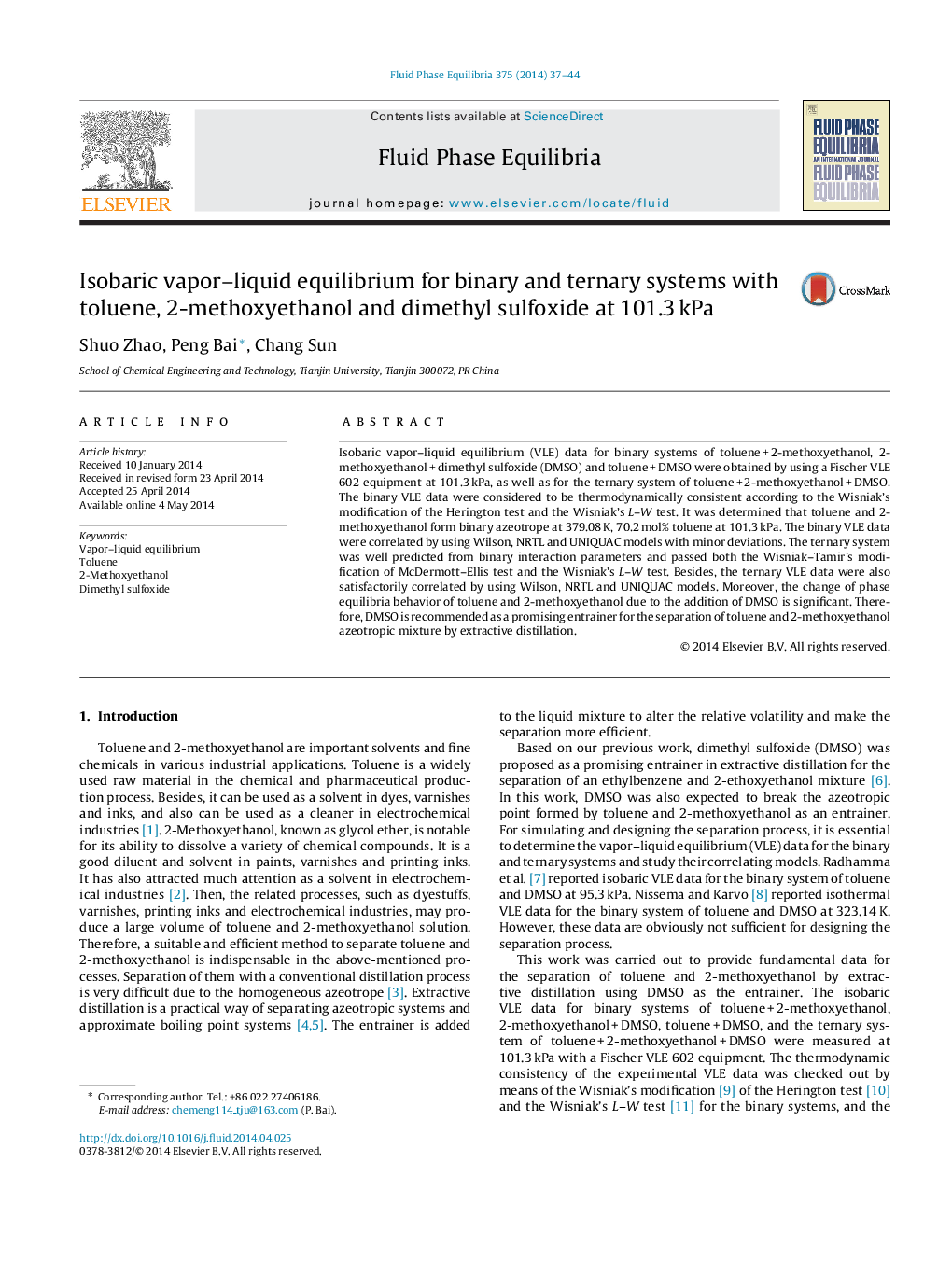| کد مقاله | کد نشریه | سال انتشار | مقاله انگلیسی | نسخه تمام متن |
|---|---|---|---|---|
| 202335 | 460598 | 2014 | 8 صفحه PDF | دانلود رایگان |

• Isobaric binary and ternary VLE data were measured at 101.3 kPa.
• The studied systems were toluene, 2-methoxyethanol and dimethyl sulfoxide (DMSO).
• The binary VLE data were correlated well with Wilson, NRTL and UNIQUAC models.
• The three models were used to predict the VLE data of the ternary system.
• DMSO showed a remarkable entrainer performance for the separation of toluene and 2-methoxyethanol by extractive distillation.
Isobaric vapor–liquid equilibrium (VLE) data for binary systems of toluene + 2-methoxyethanol, 2-methoxyethanol + dimethyl sulfoxide (DMSO) and toluene + DMSO were obtained by using a Fischer VLE 602 equipment at 101.3 kPa, as well as for the ternary system of toluene + 2-methoxyethanol + DMSO. The binary VLE data were considered to be thermodynamically consistent according to the Wisniak's modification of the Herington test and the Wisniak's L–W test. It was determined that toluene and 2-methoxyethanol form binary azeotrope at 379.08 K, 70.2 mol% toluene at 101.3 kPa. The binary VLE data were correlated by using Wilson, NRTL and UNIQUAC models with minor deviations. The ternary system was well predicted from binary interaction parameters and passed both the Wisniak–Tamir's modification of McDermott–Ellis test and the Wisniak's L–W test. Besides, the ternary VLE data were also satisfactorily correlated by using Wilson, NRTL and UNIQUAC models. Moreover, the change of phase equilibria behavior of toluene and 2-methoxyethanol due to the addition of DMSO is significant. Therefore, DMSO is recommended as a promising entrainer for the separation of toluene and 2-methoxyethanol azeotropic mixture by extractive distillation.
Journal: Fluid Phase Equilibria - Volume 375, 15 August 2014, Pages 37–44